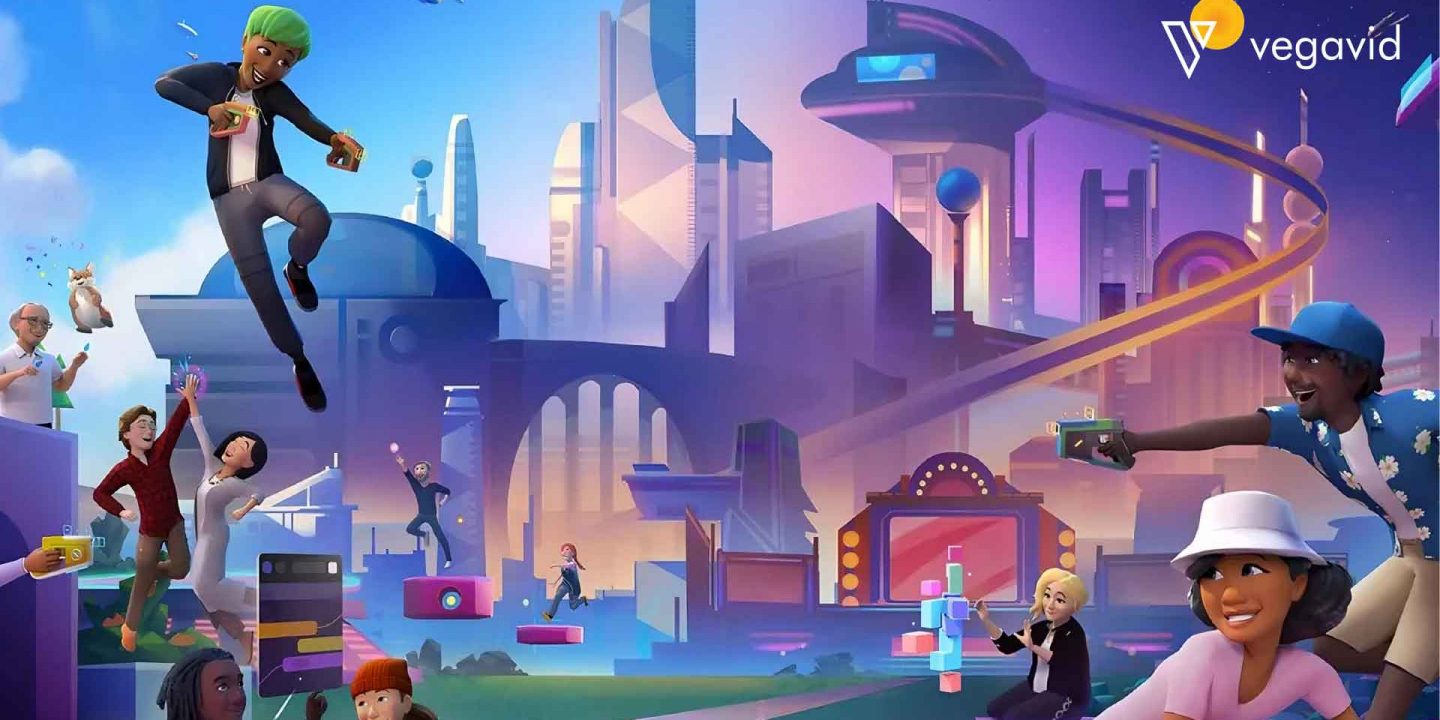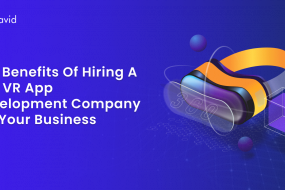
Virtual Reality (VR) and the Metaverse are two emerging technologies that have the potential to greatly impact our lives and the way we experience the world. Both technologies offer unique features and experiences, but there are also key differences between VR and the Metaverse.
In this article, we will explore the differences between VR and the Metaverse, and consider the potential impact of these technologies on our lives and the future. From the level of immersion and interactivity offered by these technologies to the ways in which they are likely to evolve in the years to come, we will examine the key aspects of VR and the Metaverse and consider the future of these exciting new frontiers in technology.
What is Virtual Reality (VR)?
Virtual Reality (VR) refers to computer-generated environments that simulate a real-life experience. VR environments are experienced through a headset or device designed to immerse the user in a virtual world.
The goal of VR is to create a sense of presence, where the user feels as though they are actually in the virtual environment. To achieve this sense of presence, VR environments are designed to respond to the user’s movements, providing an experience that is both immersive and interactive.
VR technology has advanced significantly in recent years, and VR environments can now provide highly realistic and immersive experiences. VR is used in many applications, from gaming and entertainment to education, training, and even therapeutic and medical applications.
As VR technology continues to improve and become more widely adopted, we will likely see even more applications for VR in the future, as well as a continued increase in the level of immersion and interactivity offered by VR environments.
What is Metaverse?
The Metaverse is a concept that refers to a shared virtual space or collective space created by the convergence of physical and virtual reality. The Metaverse is essentially a virtual world inhabited and experienced by people similarly to the physical world.
Unlike VR, the Metaverse is not limited to a single device or headset. Still, it is instead a persistent and immersive virtual world that can be accessed by multiple users from anywhere in the world. The Metaverse is designed to offer a more natural and intuitive form of interaction where users can engage with each other and with virtual environments in a persistent and meaningful way.
The Metaverse is still in its early stages of development, but it is rapidly advancing, and many experts believe that it has the potential to become a major part of our daily lives in the years to come. From social networks and online gaming to virtual commerce and education, the Metaverse can revolutionize how we interact with each other and the world.
As the Metaverse continues to evolve, we will likely see an increasing number of applications for the technology and a greater level of integration between the virtual and physical worlds. The Metaverse has the potential to become a truly transformative technology that can change how we live, work, and play.
5 Key Differences Between VR and the Metaverse
Virtual Reality (VR) and the Metaverse are both immersive technologies, but there are some key differences between them:
1. Immersion and Interactivity
One of the key differences between VR and the Metaverse is their level of immersion and interactivity. VR provides a highly immersive experience, with users fully immersed within a virtual environment and able to interact with that environment in real-time.
In contrast, the Metaverse provides a more integrated and persistent virtual experience, where users can interact with each other and virtual environments more seamlessly and persistently. This greater level of interactivity and integration is a key characteristic of the Metaverse and is one of the factors that sets it apart from VR.
2. Accessibility
VR technology is typically more accessible to the general public, requiring only a VR headset and a relatively modest computing setup. In contrast, accessing the Metaverse often requires more advanced hardware and computing resources, which may limit its accessibility to a smaller group of users.
Additionally, the Metaverse is still in its early stages of development, and a limited number of Metaverse platforms are available to users. As the Metaverse continues to evolve and mature, accessibility will likely become more widespread, and that more users will be able to participate in this virtual shared space.
3. Persistence
A third key difference between VR and the Metaverse is persistence. In VR, users can only interact with virtual environments for a limited time, and their interactions are not typically stored or remembered. In contrast, the Metaverse is designed to be a more persistent virtual environment where users can interact with each other and virtual environments in a more integrated and persistent way.
This persistence is an important aspect of the Metaverse, as it allows users to build relationships, communities, and shared experiences over time. As the Metaverse continues to evolve and mature, persistence will likely become an increasingly important aspect of this virtual shared space, helping to create a more vibrant and engaging virtual world for users.
4. Interoperability
VR environments are typically isolated and not connected to other virtual environments, which limits the ability of users to move between different VR experiences. In contrast, the Metaverse is designed to be an interconnected and interoperable virtual environment where users can move between different virtual environments and seamlessly interact with each other.
This interoperability is an important aspect of the Metaverse. It allows users to create a more fluid and seamless virtual experience, where they can move between different virtual environments and engage with each other in real time. As the Metaverse continues to evolve, interoperability will likely become an increasingly important aspect of this virtual shared space, helping to create a more connected and immersive virtual world for users.
5. Economic Model
Finally, the economic model is a key difference between VR and the Metaverse. VR environments are typically more of a one-way experience, where users consume virtual content created by others. In contrast, the Metaverse is designed to be a more participatory and decentralized virtual environment where users can create, trade, and exchange virtual goods and services with each other. This creates a more dynamic and vibrant virtual economy where users can create and exchange virtual goods and services, helping build a more engaged and vibrant virtual community.
These are just a few key differences between VR and the Metaverse. As both technologies continue to evolve, these differences will likely become even more pronounced. Understanding these differences is important to fully appreciate these technologies’ potential impact on our lives and the future.
The Future of VR and the Metaverse
The Future of VR and the Metaverse:
- Widespread adoption: As VR and the Metaverse continue to evolve and mature, we will likely see widespread adoption of these technologies across a range of industries and applications, from gaming and entertainment to education and training, commerce and finance.
- Advancements in technology: The VR and Metaverse technologies are still in their early stages of development, and there is tremendous room for growth and innovation. Advancements in computer graphics, artificial intelligence, and networking will play a key role in shaping the future of these technologies.
- Greater Interoperability: As the VR and Metaverse technologies continue to evolve, we will likely see greater interoperability between different VR and Metaverse platforms and greater integration between virtual and physical environments.
- New Business Models: The widespread adoption of VR and the Metaverse will create new business models and opportunities, particularly in virtual commerce, advertising, and content creation.
- Social Impact: The VR and Metaverse technologies have the potential to profoundly impact our society, transforming how we interact with each other and the world. However, there are also concerns around privacy, security, and addiction, and it will be important to address these issues as these technologies continue to develop.
The future of VR and the Metaverse is still unfolding, and there is much that we do not yet know about the direction these technologies will take. However, it is clear that VR and the Metaverse have the potential to be truly transformative technologies and that they will play a major role in shaping our lives and the future in the years to come.
Conclusion
In conclusion, the difference between VR and the Metaverse is fundamental, with VR providing an immersive, interactive experience within a limited virtual environment. In contrast, the Metaverse is a collective virtual shared space that allows users to interact with each other and virtual environments in a more integrated and persistent way.
As these technologies evolve, they can transform how we interact with each other and the world and create new business models and opportunities in commerce, entertainment, education, and more. The future of VR and the Metaverse is still unfolding, and there is much that we do not yet know about the direction these technologies will take. However, it is clear that they have the potential to be truly transformative technologies and that they will play a major role in shaping our lives and the future in the years to come.











